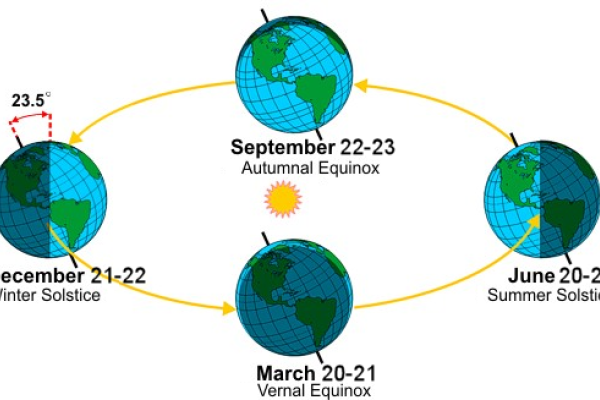What's Up? - Ohio Skylights June 2024

Constellations, Planets, and Astronomical Events Visible in June 2024
Happy Summer! The summer solstice occurs this month on June 20th, marking the astronomical start of the summer season. The solstice is commonly known as the longest day of the year, because it is when the sun is up for the largest fraction of the day. On the solstice, the sun will rise at nearly 6 am, and set just after 9 pm, granting Ohio just over 15 hours of sunlight. The solstice occurs because the northern hemisphere is tilted towards the sun, making it appear higher in our sky and therefore stay above the horizon longer. The hours of daylight vary by latitude; at more northern locations the sun will stay up even longer!
The full moon this month occurs on June 22nd, just after the solstice. June’s full moon is nicknamed the Strawberry Moon, as it rises during the time that strawberries ripen and are ready to be picked. The new moon occurs on June 6th, so the best time to observe fainter objects and constellations is near the beginning of the month when the moon is not lighting up the sky.
After a long hiatus behind the sun, a few planets are finally beginning to emerge again! Saturn, Mars, and Jupiter are visible in the morning before the sun rises and brightens the sky. Saturn rises first, around 1:30 am, then Mars at 3:20 am, and finally Jupiter at 4:50 am. The planets will form a line above the eastern horizon as they rise. The sun is not far behind Jupiter, and once it rises, its light will drown out the planets’. Mercury, Venus and Uranus are still too close to the sun to observe. Neptune is too faint to view without aid from a telescope or binoculars, but it will rise shortly after Saturn at 2 am in the constellation Pisces.
Now that summer is here, the summer constellations are rising in the East after sunset. At 10 pm, the Summer Triangle is visible. This asterism is made up of three constellations, and it is extremely useful for finding other objects in the sky. The triangle’s vertices are Vega in the constellation Lyra, Deneb in the constellation Cygnus, and Altair in the constellation Aquila. These bright stars are easy to spot, and they can help to identify their respective constellations.
